Fall is probably my favorite time of the year…crunchy leaves, cozy colors, and everything pumpkin-spiced. I prefer to see it get cooler day by day than warmer and don’t let me get started on the colors. They’re absolutely beautiful.
This Fall Color Sort Sensory Bin captures all of that charm in a hands-on, kid-friendly activity that’s as educational as it is fun. It’s simple to set up and packs in plenty of learning: sorting, identifying colors, using fine motor tools, and building focus—all wrapped in a beautiful fall theme. If your child loves seasonal play, this bin delivers hours of cozy, quiet fun.
Supplies and Materials
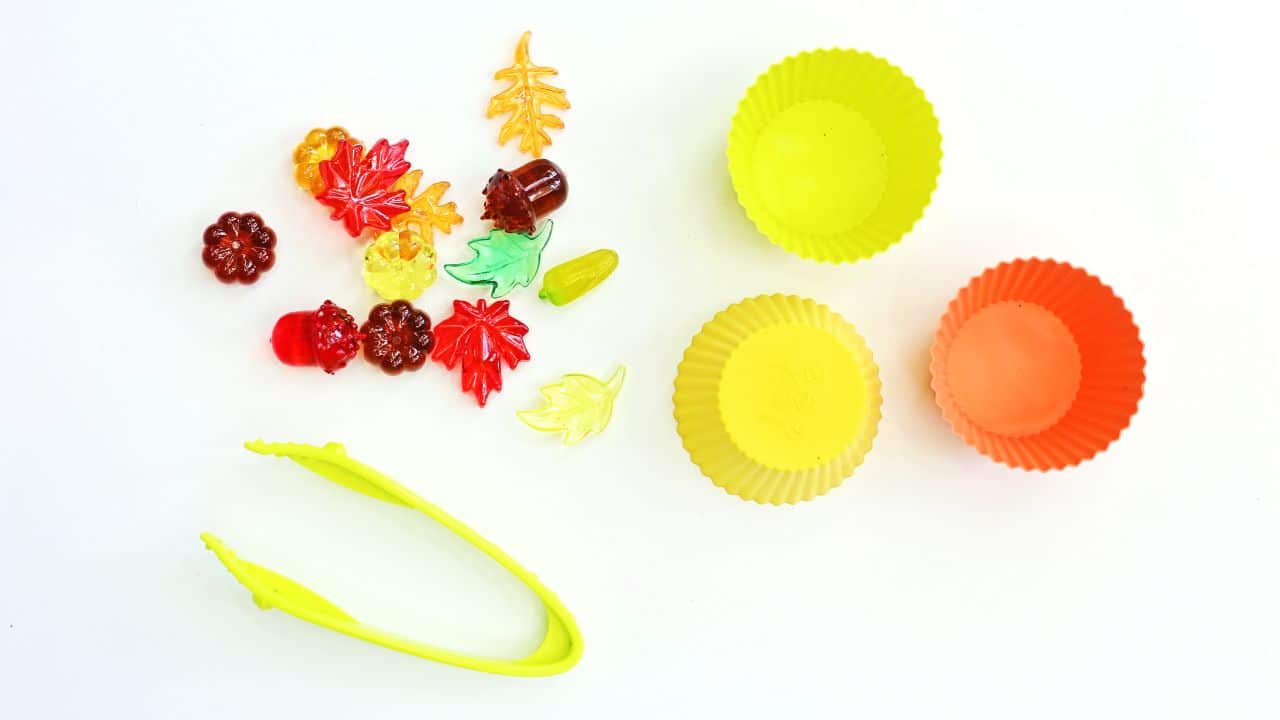
Everything in this bin is reusable, durable, and easy to store for next year’s fall fun:
- Fall-themed acrylic pieces (think mini pumpkins, leaves, acorns, corn, etc.)
- Silicone cupcake liners (choose reds, oranges, yellows, browns—classic fall colors)
- Sensory tweezers or tongs (child-size tools are ideal for developing grip and control)
Optional: Add dried corn kernels or lentils as a filler base, or place everything in a shallow wooden tray for a more Montessori feel.
How Kids Play
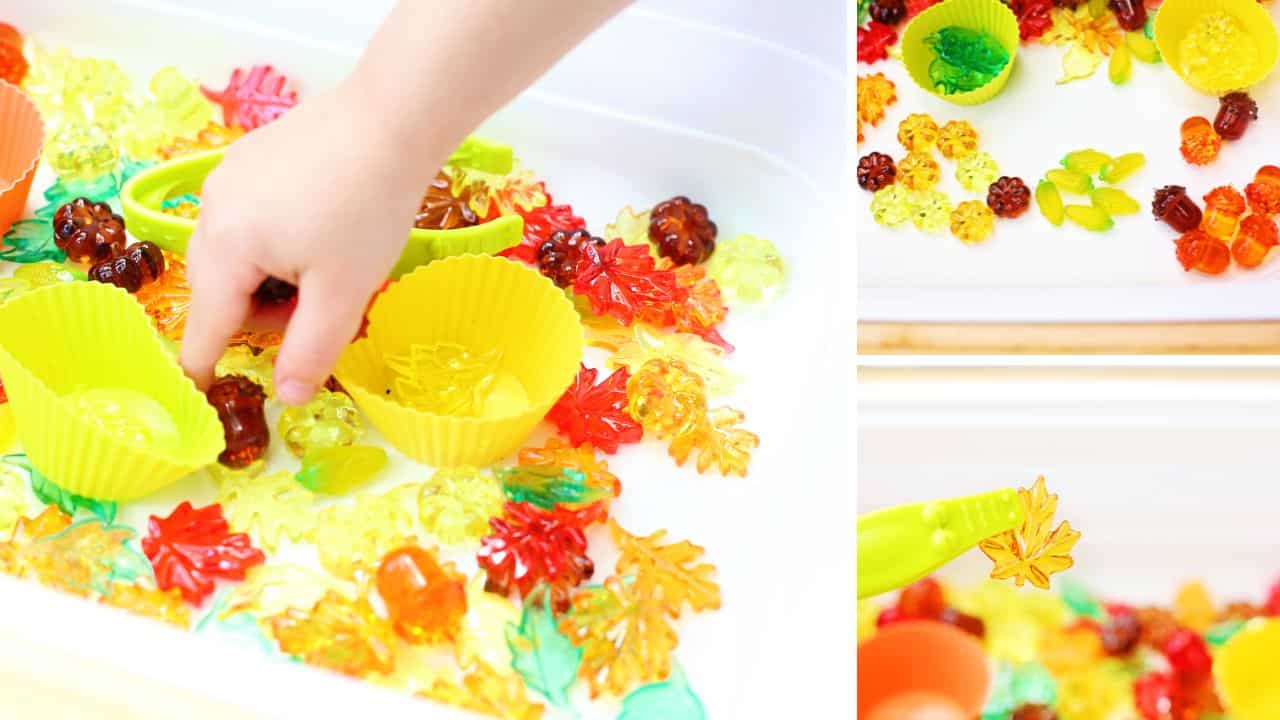
This bin is incredibly open-ended. It is designed to be intuitive and open-ended. There’s no right or wrong way to explore. Kids can:
- Sort by color: Place red leaves in one liner, yellow pumpkins in another.
- Sort by type: Group all the acorns together, or make a pile of just pumpkins.
- Play Find It games: Call out a color or object and have them search and grab it.
- Create patterns or sequences: Red, yellow, red, yellow… or pumpkin, acorn, pumpkin.
Let them take the lead—some kids will sort, others will role-play harvest scenes or turn it into a counting game.
Why It’s Great for Development
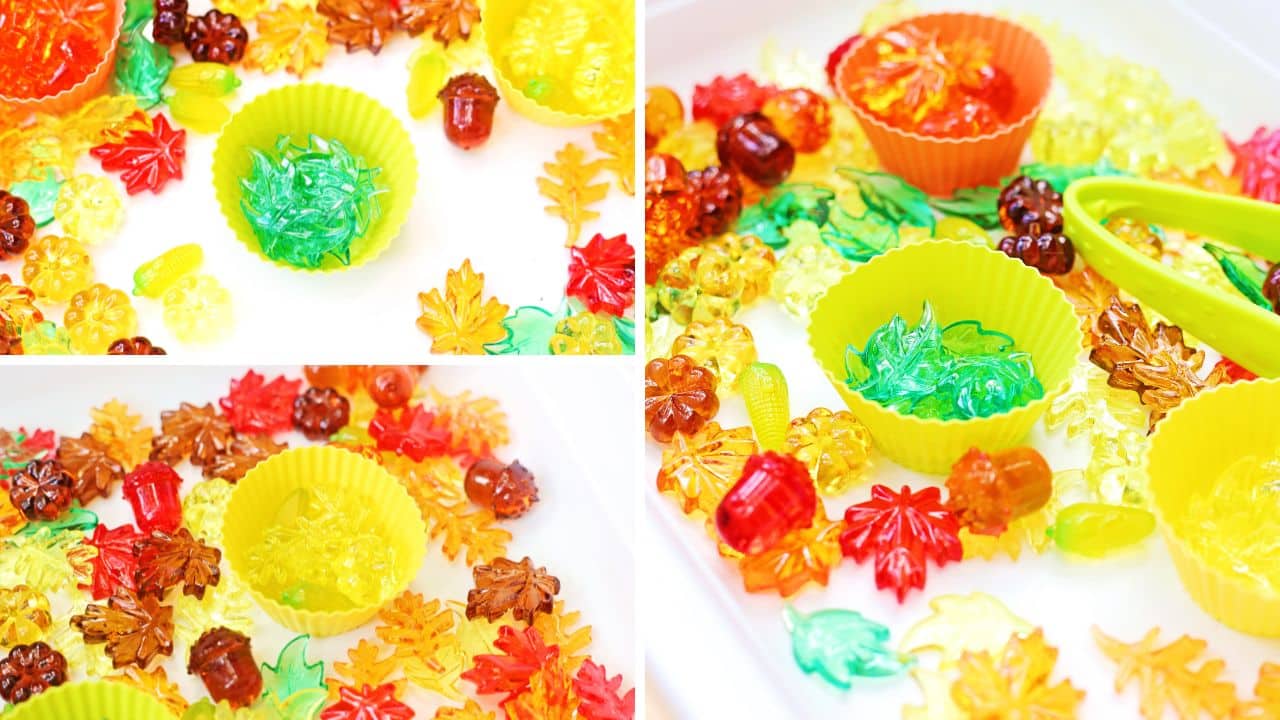
Sure, it looks like play—but it’s secretly doing a lot more. It’s packed with learning benefits that support early childhood development in meaningful ways.
- Color Recognition & Categorization: Sorting helps kids visually distinguish between colors and shapes—early math and reading skills start here.
- Fine Motor Strength: Using tweezers builds hand muscles and coordination, which support pre-writing skills.
- Focus & Patience: Slowing down to sort one piece at a time teaches attention to detail and calm focus.
- Language Development: Talking about the items (Is that a gourd? What color is this leaf?) builds vocabulary and curiosity.
Fun Facts About Fall to Share While They Play
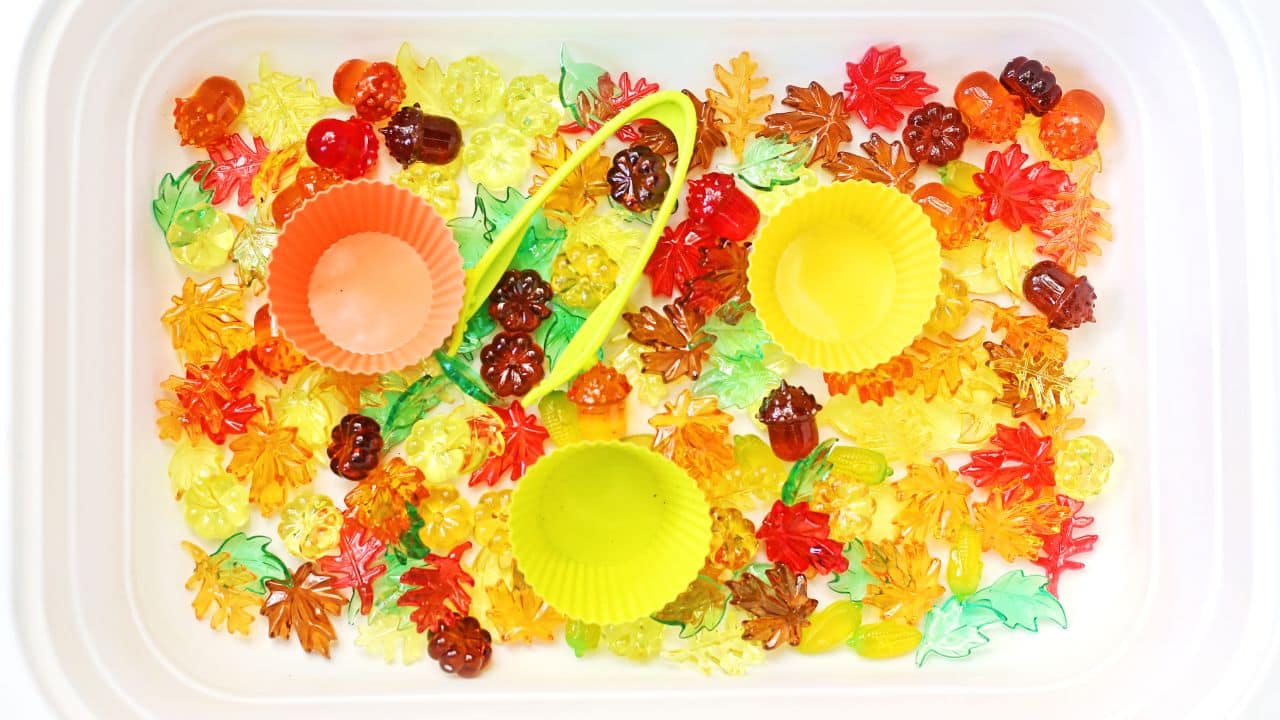
Adding a few interesting facts to the mix can deepen their understanding of the season and spark fun conversations while they sort.
- Why do leaves change color? Leaves stop making chlorophyll (the green stuff) in fall, letting reds, oranges, and yellows show through.
- What causes fall to happen? The Earth tilts away from the sun, which gives us cooler temperatures and shorter days.
- Acorns are baby oak trees. If left alone, some acorns will grow into mighty oak trees!
- Pumpkins are fruits. Yep, anything with seeds on the inside counts as a fruit—even if it tastes more like a veggie.
- Squirrels collect food for winter in fall. That’s why you might see them gathering acorns and running around more than usual.
Frequently Asked Questions
1. What age is this bin best for?
Great for ages 2–6. Toddlers will love scooping and exploring, while preschoolers can focus on sorting, matching, and identifying.
2. Is this a mess-free activity?
Yes! There’s no filler (unless you choose to add one), and the acrylic pieces are easy to clean up and reuse.
3. Can I use different tools besides tweezers?
Definitely. Try small tongs, spooning tools, or even fingers for younger kids still developing fine motor skills.
4. How can I store this bin?
Use a small container or zippered pouch for the acrylic pieces and stack the cupcake liners. It all fits easily in a drawer or shelf bin.
5. Can I switch this up later?
Absolutely. Try a winter version with snowflakes and mittens, or a spring bin with flowers and bugs.
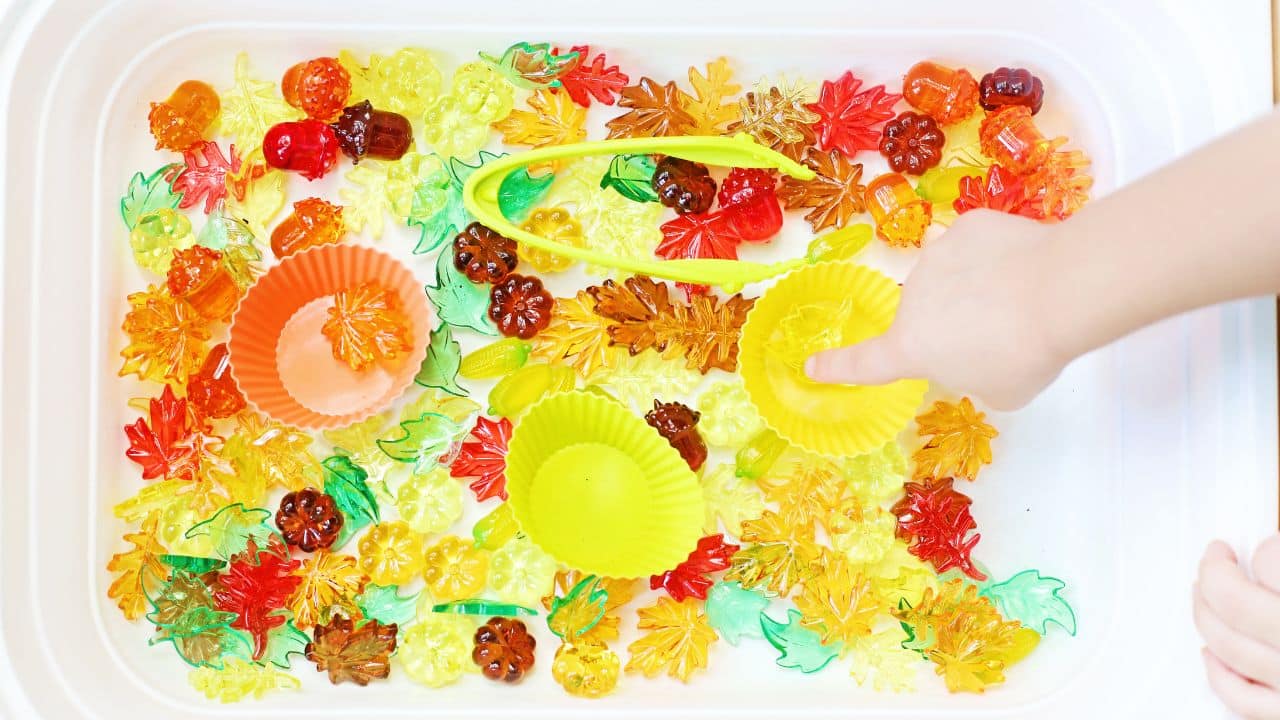
Leave a Reply